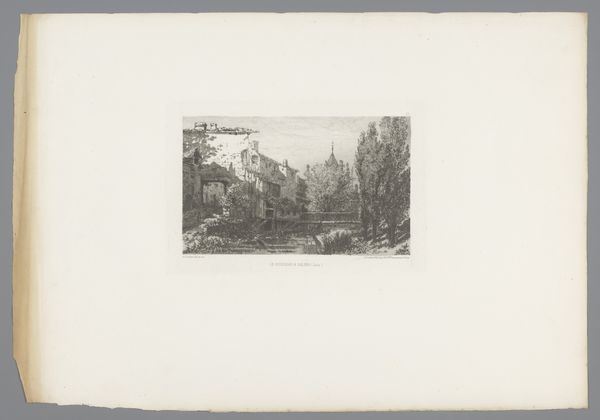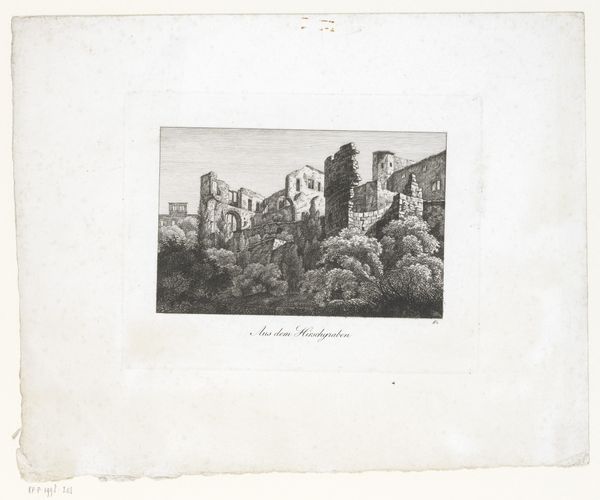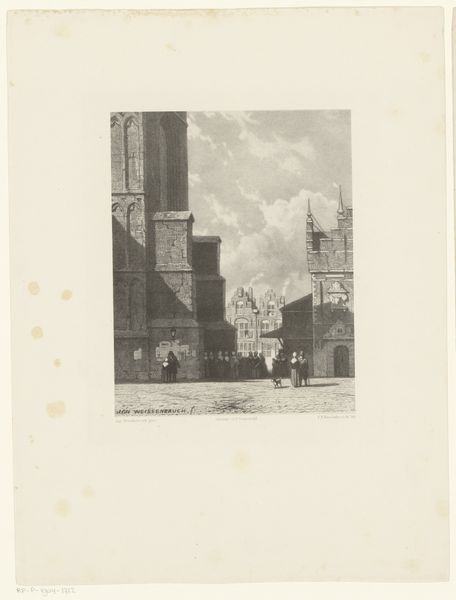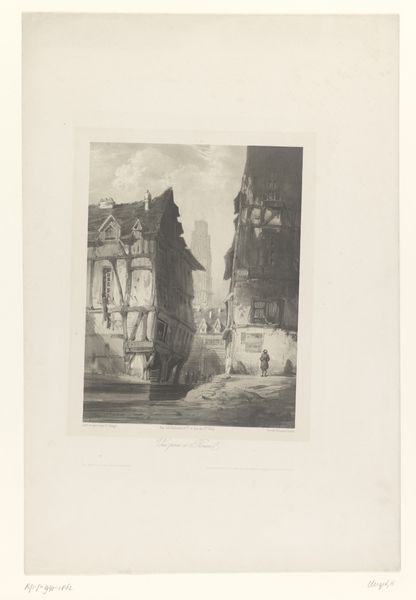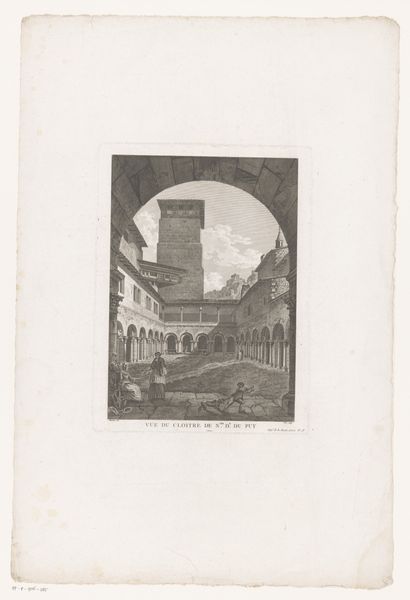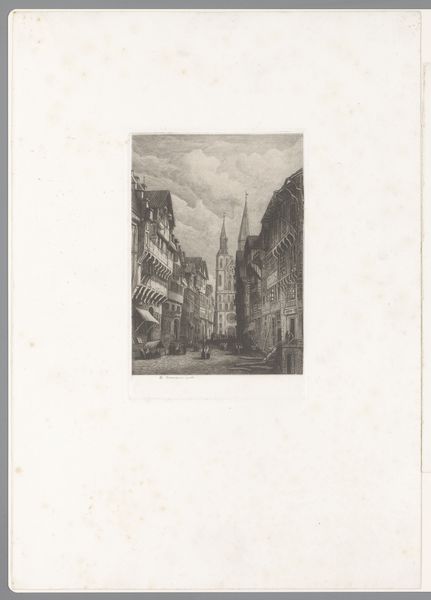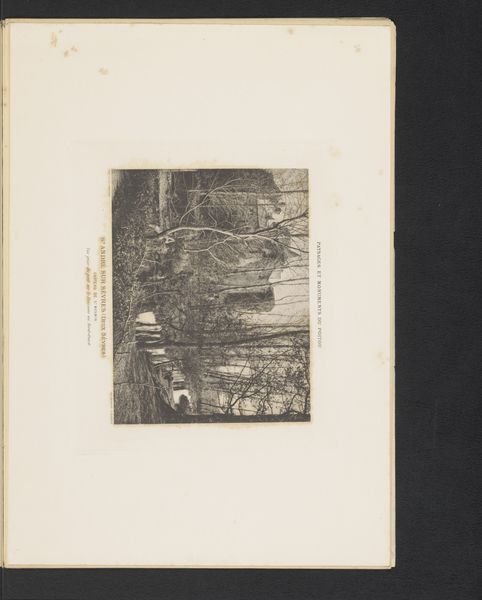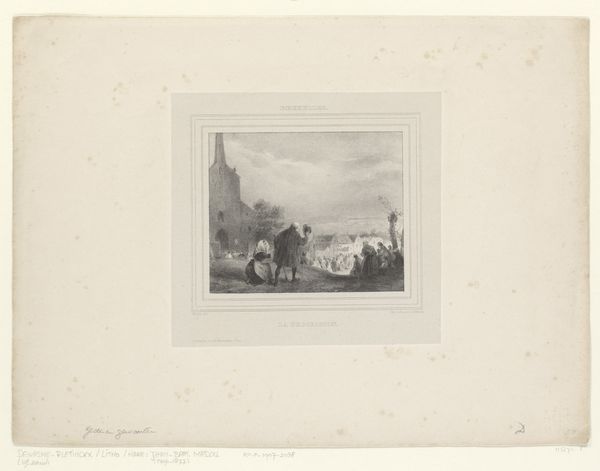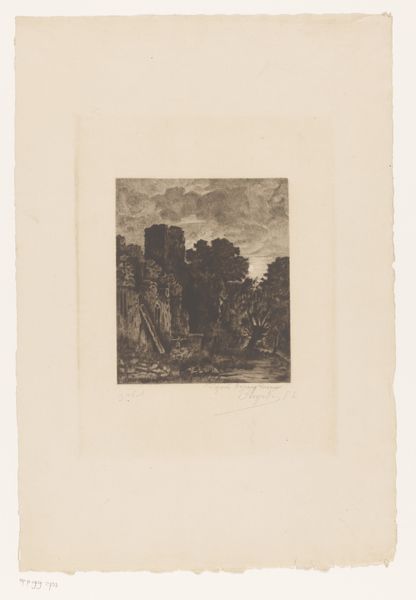
Dimensions: height 200 mm, width 258 mm
Copyright: Rijks Museum: Open Domain
Curator: This is "Gezicht op La Ferté-Milon," an engraving and etching by François Denis Née, dating roughly from 1749 to 1817, currently held in the Rijksmuseum. Editor: My first impression is one of faded grandeur. The light, the composition it feels quite… classical, almost melancholic in its stillness. The ruins loom large in the distance. Curator: The ruins tell a story, don't they? La Ferté-Milon had significant historical importance. Understanding the place helps us to contextualize this image. It speaks to a past French kingdom. Editor: It’s intriguing how the printmaking technique lends itself to this subject. Look at the texture, those precise lines; you get a real sense of the stone and masonry—the labor, both past and present, to erect and maintain. The act of reproduction and dissemination of the print echoes how the artist's labor continues on through mass consumption. Curator: The choice of representing a cityscape, which emphasizes civic pride and the artist's connection to broader urban planning is interesting. It's not just about visual appeal, it is an agenda of projecting particular imagery of a city. Editor: Agreed, but consider the materiality as well! The etching and engraving lines vary creating tonality and atmosphere, while also directly evidencing the engraver's work—this process makes something precious repeatable, even ordinary. It allows wider audiences beyond elites access to it. Curator: Precisely! And the availability shapes our understanding and the city's role in society then and even how we continue the conversation around it now. This image becomes a tool for cultural understanding of urban space. Editor: So, from this close analysis of line, form and labor of making art, the engraving of "La Ferté-Milon" gives both a window into the material history of the artwork but the place represented too. Curator: Absolutely. Reflecting on it, understanding Née’s work requires engaging with the place that it inhabits, then and now. This artwork functions almost as historical data that is made beautiful.
Comments
No comments
Be the first to comment and join the conversation on the ultimate creative platform.
